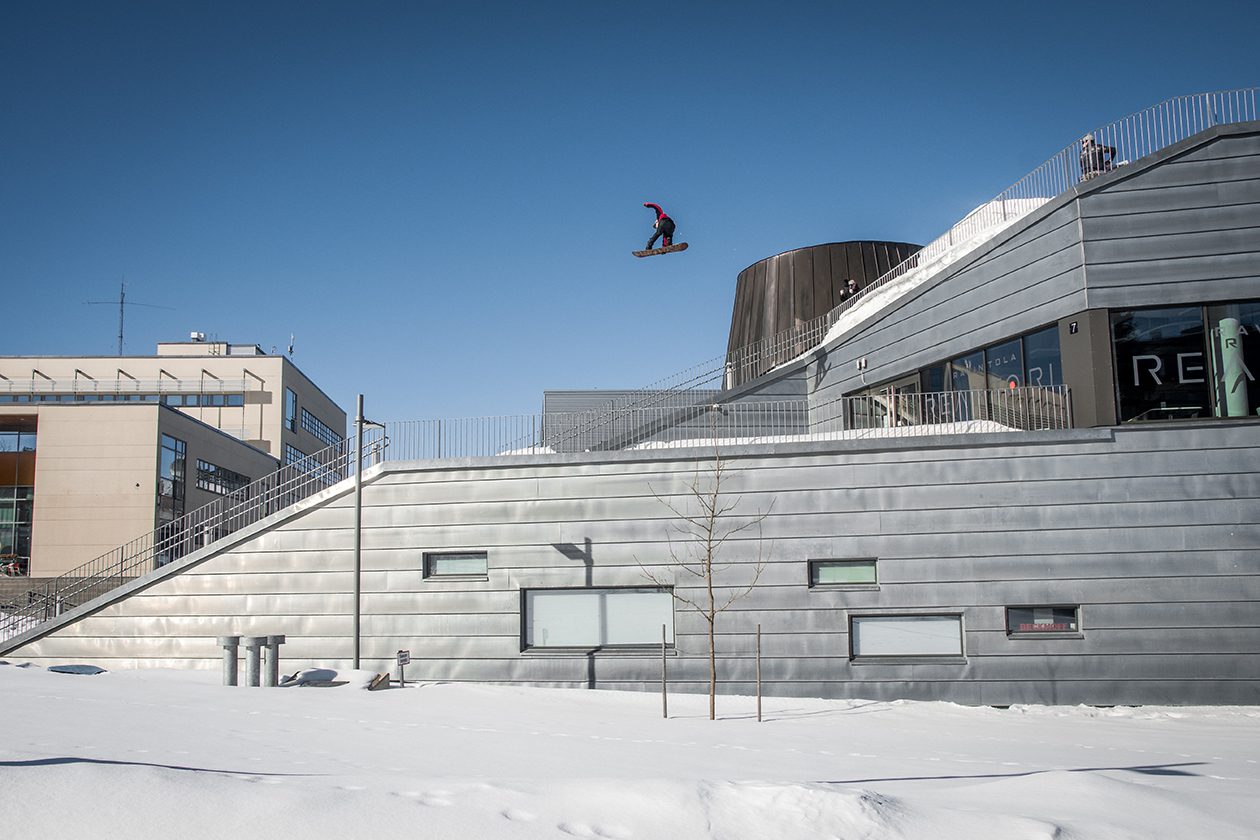On the Streets of Helsinki
On the Streets of Helsinki: The Trailblazing Journey of Women in Street Riding
Words by Stella Pentti. Cover photo by Joonas Eloranta
We dive headfirst into the world of street riding with Henna Ikola, Sara Säkkinen, Merika Enne, Telma Särkipaju and Sofianna Oikarinen
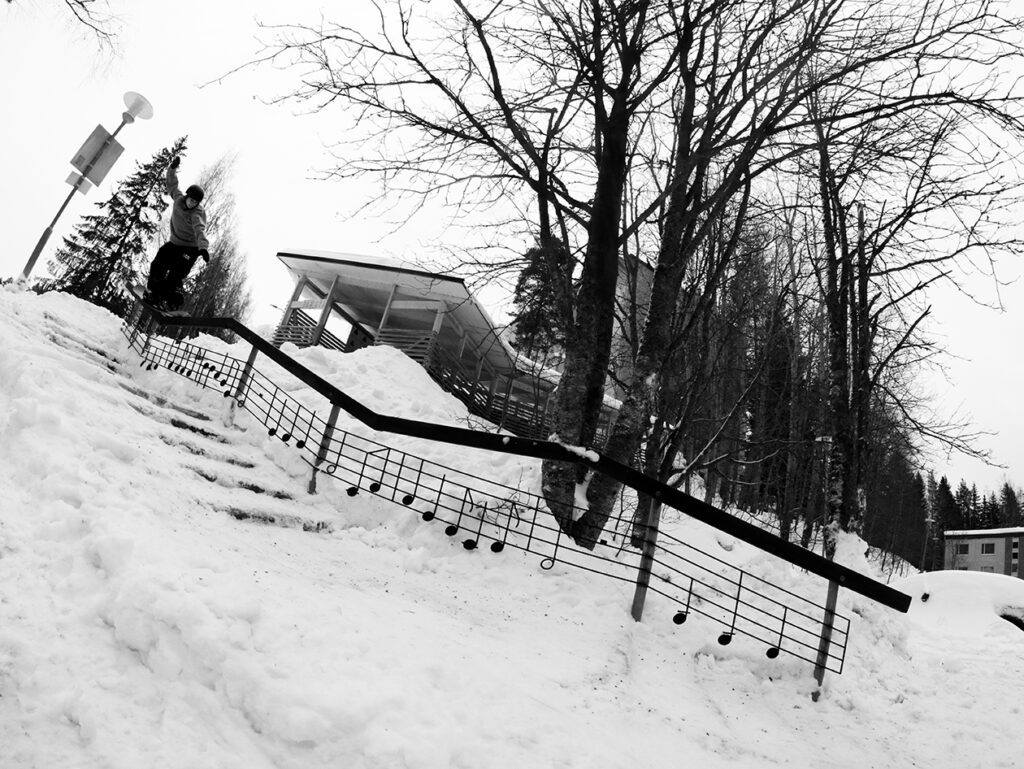
Street riding has often been said to represent the true essence of snowboarding: a fusion of creativity, skill, and self-expression – a candid statement of individuality. Riders push physical boundaries, transforming urban environments into playgrounds while managing fear and working on finding the right mindset to ride the gnarliest street spots. What we see, as observers, is the final product: a polished result of hard work and countless hours of trying, dedication and, at times, fighting personal battles.
However, for women, these battles have gone beyond personal ones. For years, they involved breaking down cultural barriers, challenging outdated norms, and fighting for equal recognition in an industry that has long been dominated by men. Now, after a lot of hard work, resilience, and developing industry norms, we see it all changing.
On the Streets of Helsinki is an introduction to the world of street riding through the lens of Finnish female street riders. It explores what street riding is all about, what makes it unique, and how the scene has changed over the years. Henna Ikola (riding since 2006), Sara Säkkinen (riding since 2009), Merika Enne (riding since 1998), Telma Särkipaju (riding since 2013), and Sofianna Oikarinen (riding since 2013) share their thoughts on navigating the street riding world from a female perspective.
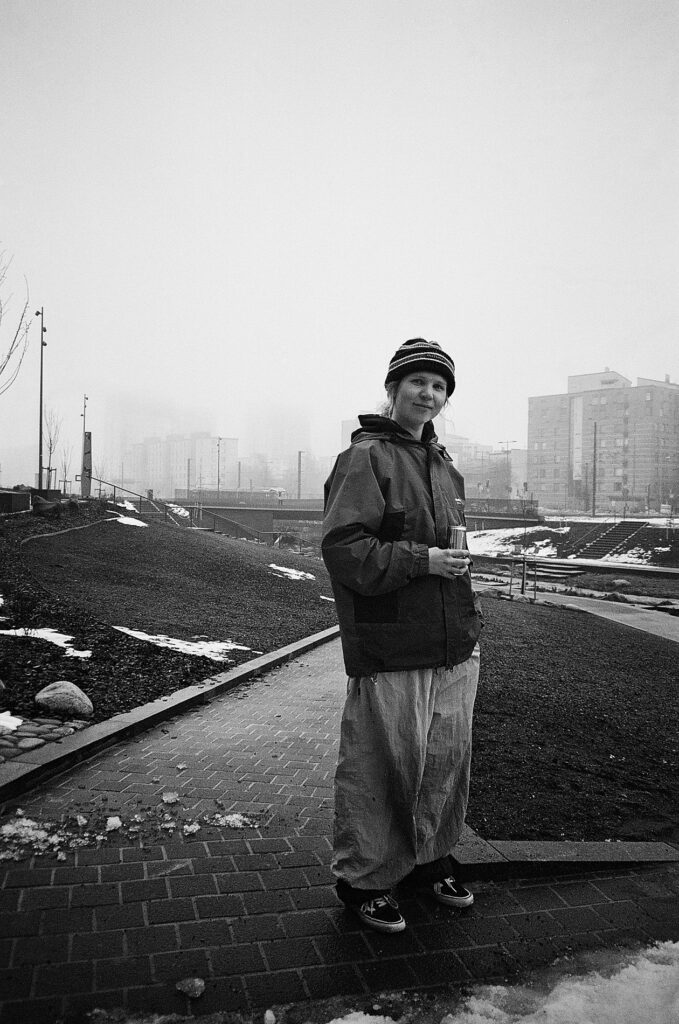
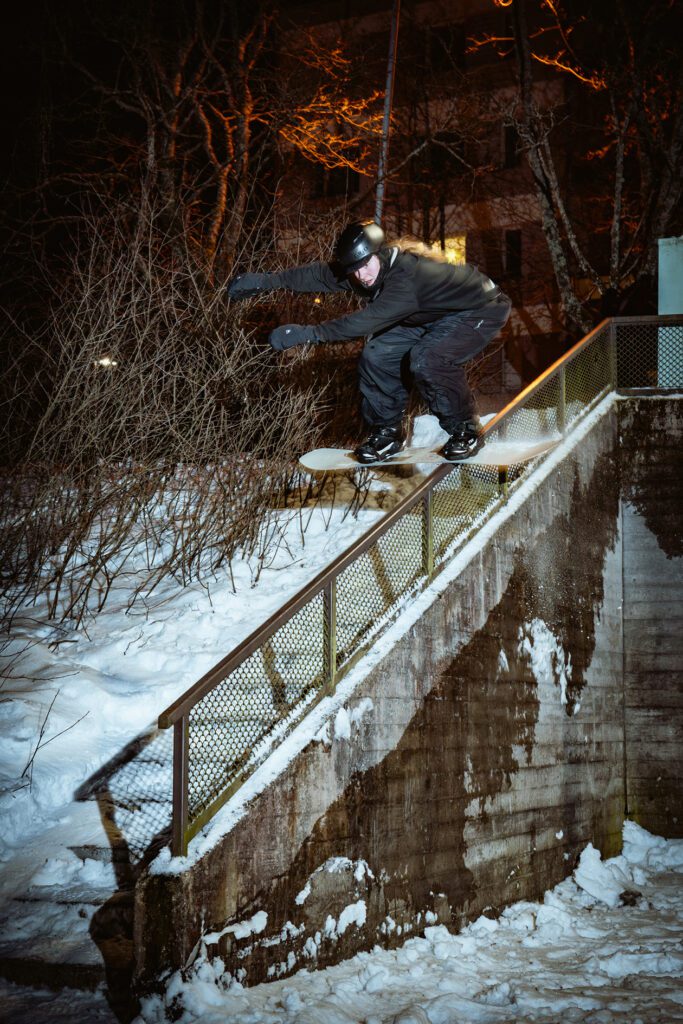
Finding the Passion
At its core, snowboarding is all about having fun, and that’s the main reason many are drawn to it. For a long time, though, pursuing a professional career in the sport meant going down the competitive route – especially for women. Both Henna Ikola and Merika Enne know this path well. “I always thought that if I was going to make it as a pro snowboarder, it had to be through competitions, and from there, I could transition into filming,” Merika recalls of her journey.
Henna, part of a younger generation, was also deeply embedded in the competitive scene. But once she discovered street riding, it ignited a passion she couldn’t ignore. “It sparked this flame that didn’t go away, and I knew I had to get out there and start filming.”
Where it started
While many have successfully turned their passion for street snowboarding into a career, the scene has historically been dominated by men, leaving women with limited opportunities to break in, even though plenty of female riders dreamed of pursuing that path. Merika Enne was one of those dreamers. “I remember my first snow expo,” she recalls. “I bought Ro Sham Bo, with Marie-France Roy, Annie Boulanger, Natasza Zurek, and loads of really high-level female riders. I remember watching it and being like, wow, this is it: this is what snowboarding can be at its best. When the first snow came, I had to go and jump down off the dumpster roof into our garden!”
Looking back at the street scene of the early 2010s, there’s been a noticeable shift from what was once a male-dominated space. Not only have more women entered the scene, but attitudes have evolved as well. “Back then, there were separate spots for women and men,” Merika explains. As one of the female pioneers in Finnish street riding, she helped push the boundaries, hitting the same spots as the men. “Some of those spots scared the life out of me, but I still rode them.”
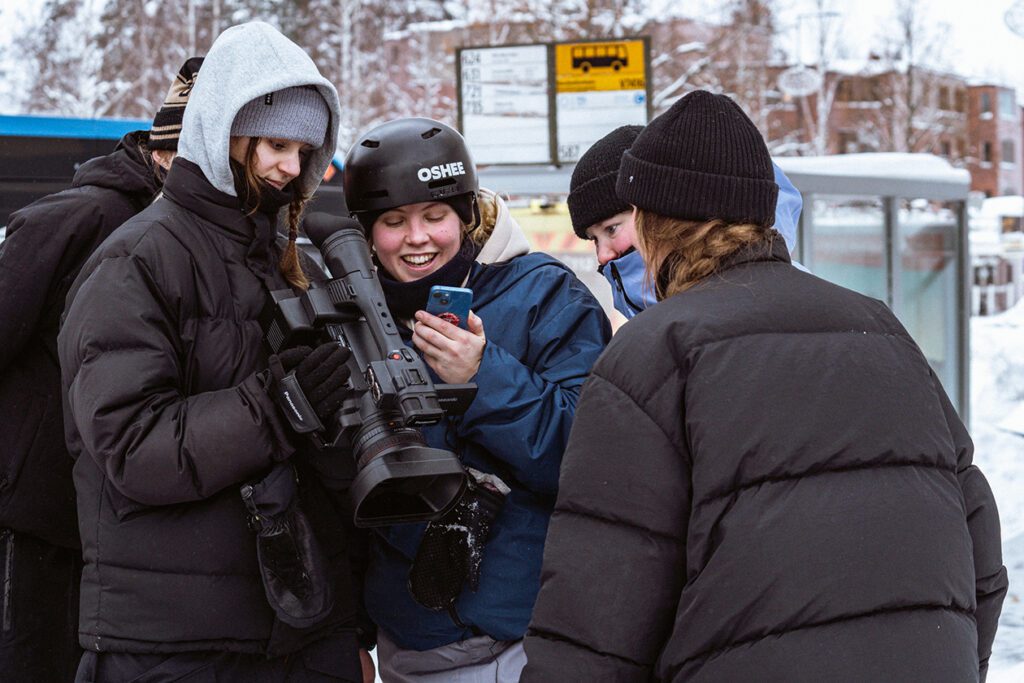
At the time, Merika was one of the few women navigating the Finnish street snowboarding scene, and the mindset towards female riders was often a bit backwards. “I remember being on trips with the guys, listening to how they talked about women, and thinking, ‘I never want them to talk about me like that.’ Back then, it seemed like the only way to be respected as a woman in snowboarding was to either be the girlfriend of someone in the scene or to be ‘one of the guys.’”
This mentality drove Merika to push herself far beyond her physical and mental limits just to ‘prove something to someone’. Back then, snowboarding, especially street riding, was seen as a daredevil sport and, to a degree, associated with shows like Jackass and shaped by external influences with little regard for one’s physical or mental well-being. “There was almost a pride in never crying, and I felt like my credibility within the scene would suffer if I showed tears,” Merika says. “It felt like there was a detachment from the body, and testing your pain threshold was inevitable, but I guess that’s just how it had to be back then.”
For years, brands often only made room for one woman on each team, which sometimes created competition among them instead of solidarity. But for Merika, the support from other women was always there; it was more a case of male riders who often undermined her. “There was this sense that men were higher in the hierarchy, that they were superior in the scene.” Despite the sense of inequality, there was also a strong, loving community and support system. “I’m so grateful for everyone who took me to different spots, helped me film, pushed me, and believed in me. It’s important to acknowledge that many guys have also contributed to creating the rightful space for women in this industry.”
Henna Ikola’s introduction to street snowboarding came from being the only woman in her crew. She, too, found a lot of support from her male crewmates. “The guys were super supportive and helped me a lot,” Henna shares. Still, she wasn’t immune to the classic ‘you ride well for a girl’ comments. When she got her first sponsorship, some male riders claimed it was only because she was female. “It definitely feels like we’ve had to push harder to show that we deserve what we are being offered.”
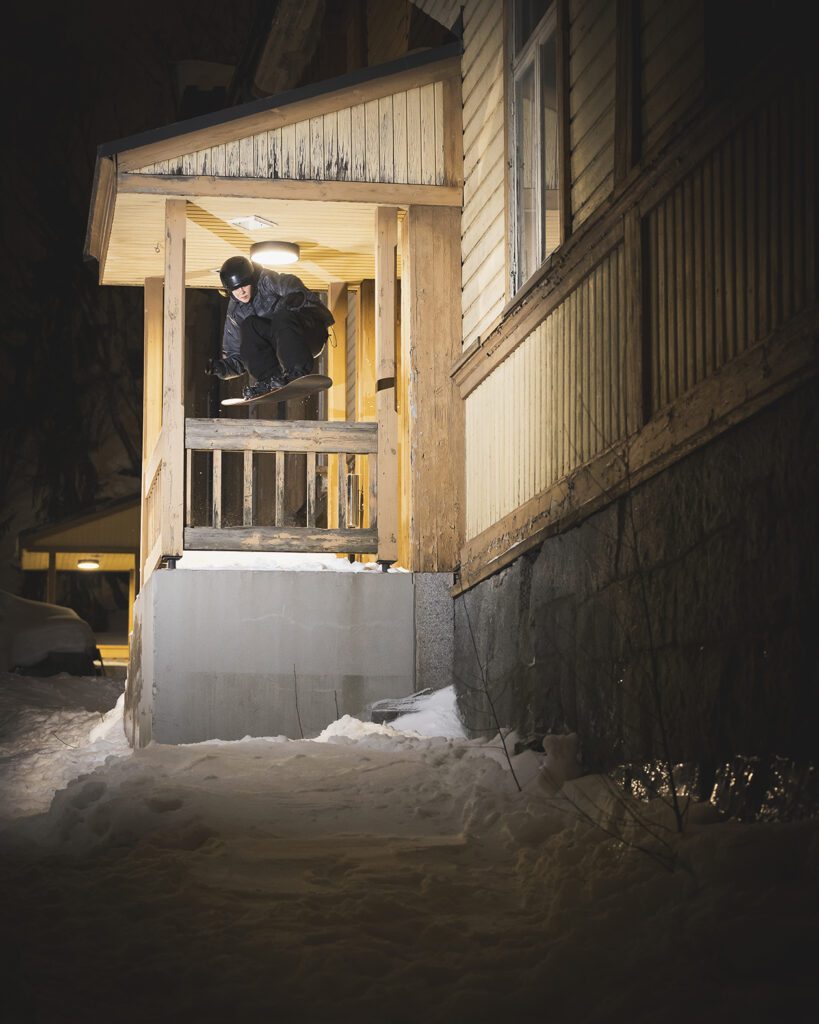
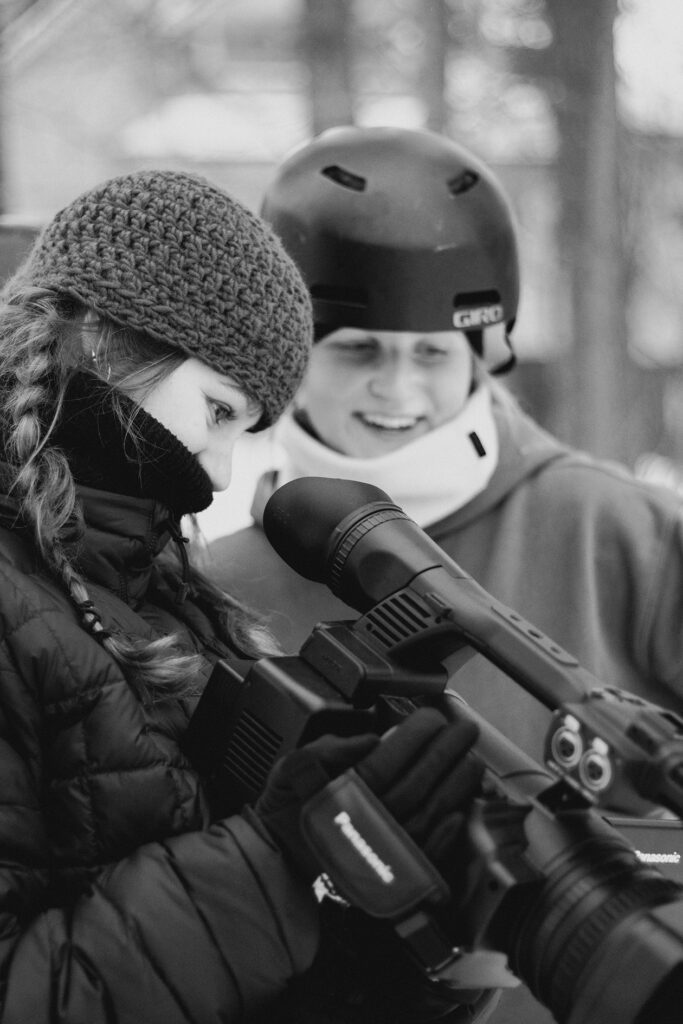
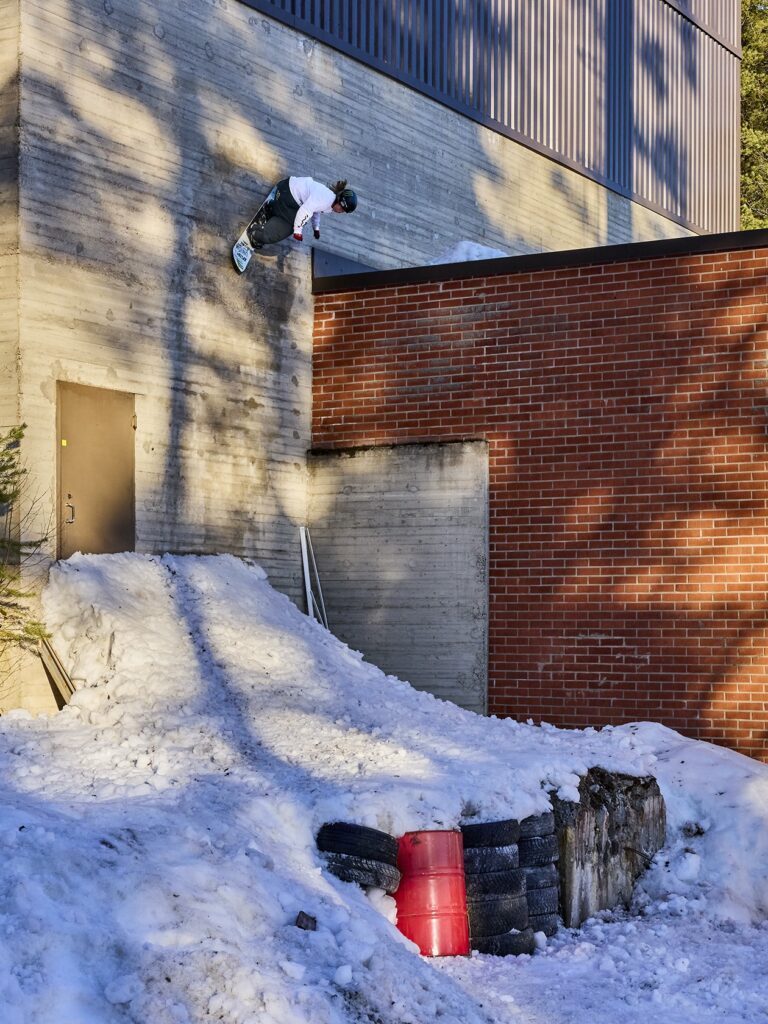
The Uninvited and Industry Support
In recent years, we’ve witnessed a significant shift in opportunities for women to pursue street snowboarding at a professional level. But what sparked this change? Undoubtedly, one of the main catalysts for this, if not themain one, has been Jess Kimura’s The Uninvited – both the movies and the events. The Uninvited opened doors for female street riders like never before, including Henna Ikola, who recalls, “Before The Uninvited, there weren’t many videos that featured women, and that’s exactly what Jess set out to change. Now, we’re seeing more women involved in major street projects. However, there still aren’t as many women featured in movies as men, but the number of female riders in movie edits is constantly growing.”
The impact of The Uninvited has elevated women’s street riding to new heights. As Sara Säkkinen notes, “It may have even opened people’s eyes to the fact that women’s snowboarding is its own market.”
United Chaos
While many women started out as the sole female in their crews, a few years ago, the Finnish snowboard scene saw the emergence of United Chaos – an all-women crew that formed during the making of the movie Remarkable, organized by Helsingin Lumilautailijat, Sara Säkkinen, and Henna Ikola. The crew includes Carola Niemelä, Emmi Parkkisenniemi, Veera Immonen, Maija Luurila, Saana Korhonen, Eveliina Taka, Karoliina Wuorivirta, Telma Särkipaju, Sofianna Oikarinen, and filmmaker Julia Voutilainen.
For Sofianna Oikarinen, the best part of being in an all-women crew is the shared experience: “We go through all the highs and lows together and celebrate the wins.” Their first film project, Remarkable, was a huge success in the industry, standing out with its authentic portrayal of emotions – something Telma Särkipaju feels is often missing from snowboard films. The film truly resonated with the community while also showcasing how far we’ve come, “it showed how much things have evolved and how much more genuine support there is for one another,” Merika concludes.
Thinking back to when Remarkable was released, Sara remembers feeling overwhelmed by the feedback it received, “I received messages from friends and strangers alike, telling me how stoked they were about the movie, how great it was, and the overall feeling of joy and acceptance it evoked in them. This shows how people are there to support and encourage one another.”
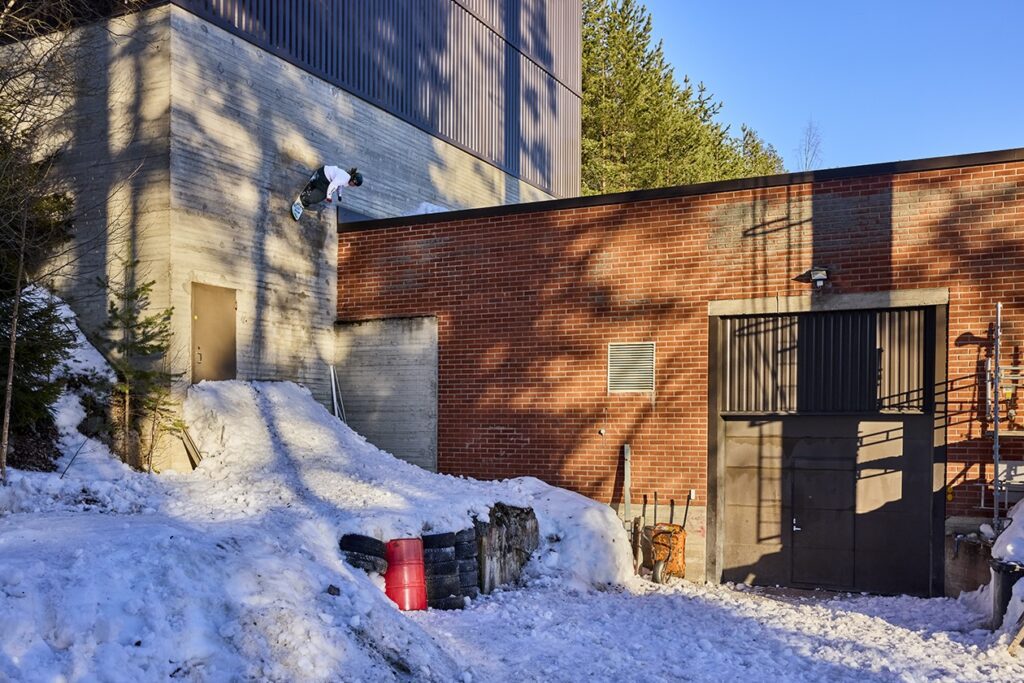
Helsingin Lumilautailijat
While the industry support and the opportunities for women to pursue a career in street riding have grown immensely throughout the years, general awareness of street snowboarding still lags behind in the mainstream. Despite Finland’s reputation for spitting out talented snowboarders, especially within the street scene, there’s room for growth in the recognition of street riding.
Helsingin Lumilautailijat (Snowboarders of Helsinki) has played a crucial role in encouraging new riders and fostering a deeper understanding of street snowboarding while providing a platform to learn the ropes of street riding. Still a relatively new organization, they’re working hard to inspire the next generation of snowboarders by showcasing the fact that snowboarding isn’t just about competing but mainly about having fun. Henna hopes this movement will help kick off a whole new level of street riding, especially for women, and show riders and parents that street riding is a real thing, “I hate that people see street riding as a failure, that if you don’t make it to the Olympics, your career has failed. Helsingin Lumilautailijat encourages people to ride, film, and see beyond competitive snowboarding.”
The aim isn’t just to churn out professional street riders but to encourage people not to give up on snowboarding if the competitive path doesn’t feel right and to highlight that there’s more to snowboarding than just that, “we want to emphasize the creative side of snowboarding and the joy it brings.” Sara tells us.
The Highs and the Lows
Street snowboarding comes with its own set of challenges: scouting locations, building spots, and nailing difficult tricks. The highs and lows of this process are something all riders experience. As Sofianna puts it, “It’s a lot of hard work and constant pressure to push yourself. It’s a mind game – I’m always scared, but it’s about having fun together and pushing each other.”
For Merika, one of the best parts of the process is the feeling of closing a circle, “It’s a form of creativity, an idea becoming visible. You find a spot, a spot no one’s rode before me, and then you have a vision of how to ride this. Then, you wait for the snow to fall. Then you build the spot, try it out, and realise, ‘Yeah, this can work’. Then you film it, nail it, and see it all on camera. In the end, it’s the journey of all the effort that goes into it that counts most.”
Beyond the physical challenges, street riding teaches deeper lessons about unity and overcoming fear. Merika reflects, “The differences in the level of riding, type of equipment, age, sex or status are irrelevant when it comes to experiencing the unity that these daring activities create. It’s about voluntarily facing a risky challenge and overcoming your own fear by doing it. Doing that over and over again has given me the courage to seek and follow my purpose in life today.”
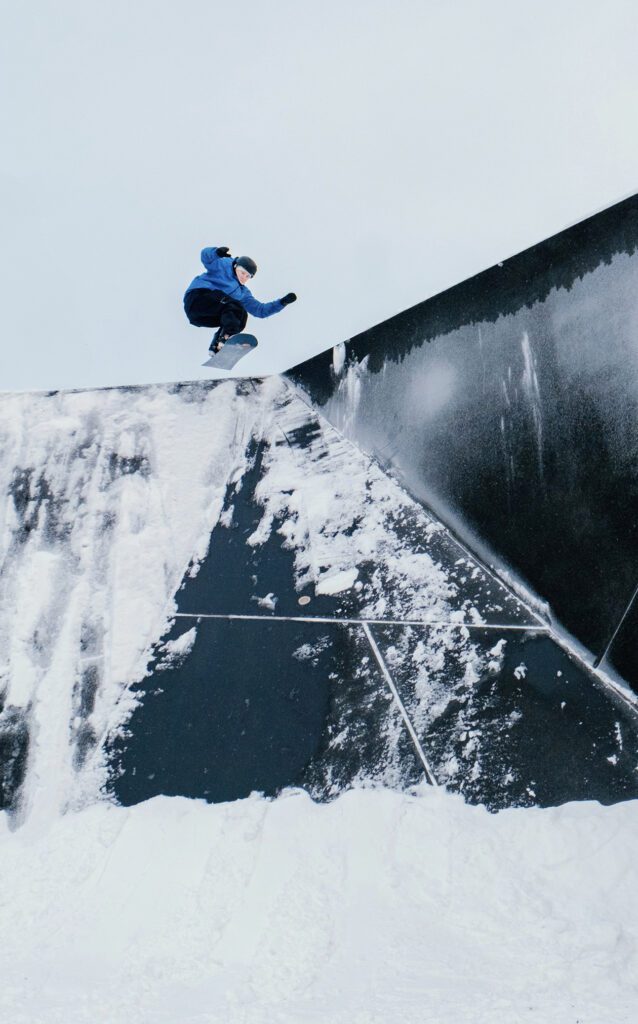
However, the reality of street riding also includes run-ins with angry landowners and the constant risk of injury, with social media adding another layer to the experience. Merika recalls how platforms like Instagram were just gaining traction when she signed her first sponsorships,” The first year, there weren’t any talks of Instagram or social media in the contracts, but then, things started to change. Suddenly, there was a fixed set of Instagram posts that had to be published a year and guidelines on how the brand logo had to appear on the post.” Reflecting back on how the rise of social media ended up affecting her career, Merika says, “I started focusing more on how my snowboarding and life looks to the outsider than how it feels. Then came all the sponsors, followed by the feeling of me not being good enough at snowboarding. Looking back, I was a confused young woman at the time and very unsure of myself, and I tried to compensate and boost my ego through Instagram. In the end, it all started revolving around selling myself on Instagram, and it became clear to me that if I wanted to do this professionally, I would need to market myself like some brand on social media. That’s when I realised I was no longer doing it for me, and I decided to step away from street riding.”
Nowadays, snowboarding is so much more than just riding and filming a part. Social media has become a huge aspect of it, as well as attending events, networking and putting yourself out there while keeping on top of how the market is evolving. Henna explains, “It’s not enough for you to stay in Finland and put out one part once a year, no matter how good that part is. And then we circle back to finances; you need money to do that. And if you’re in Finland, where it’s super expensive to fly anywhere, and you also work alongside snowboarding, you can’t just leave your job and buy a ticket to an event in the States.”
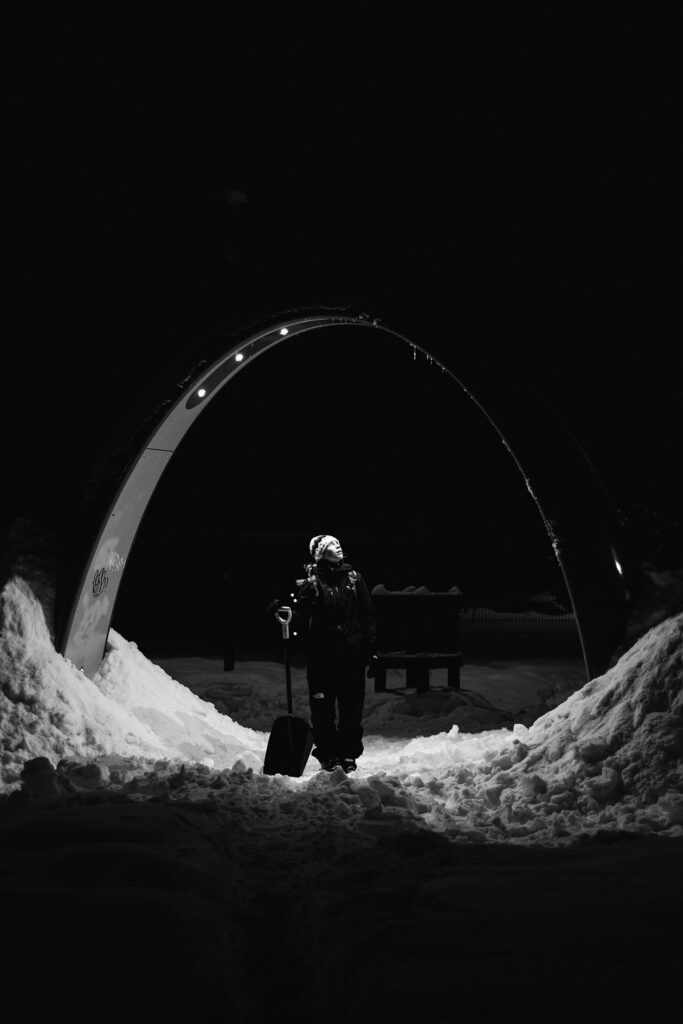
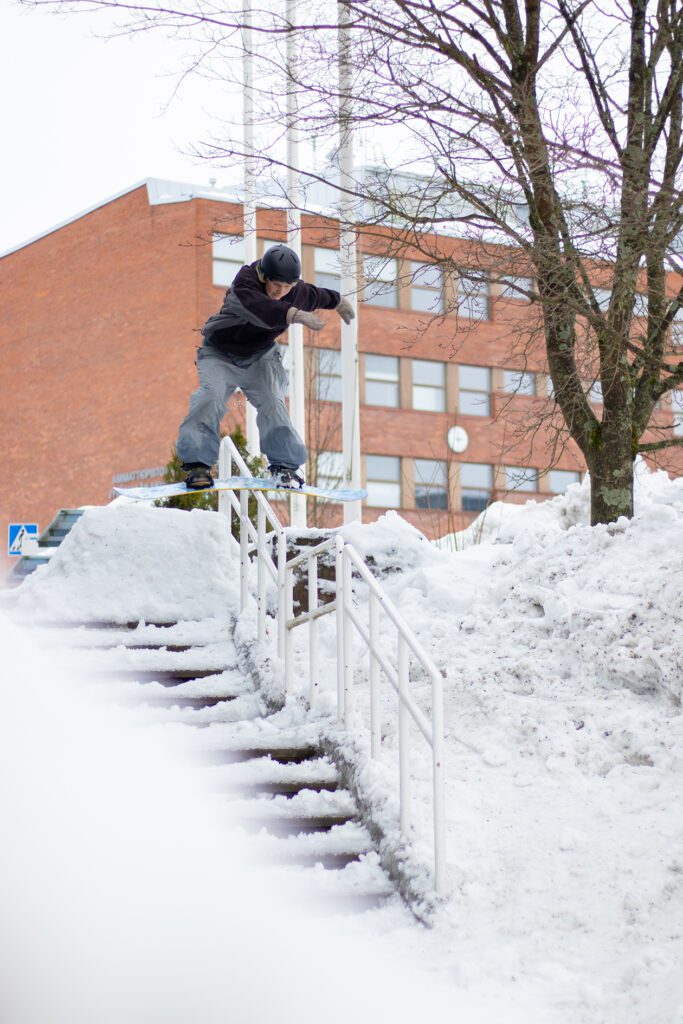
Next Chapter
As we look to the future, the progression of women’s street snowboarding is inspiring. The level of skill and support within the community continues to grow at a rapid pace, and it has been mind-blowingly amazing to watch it evolve in recent years.
As Ylfa Runarsdottir said in her episode of The Bombhole, “We’ve reached the point where if you’re a woman on the slopes, you’re starting at the same level as the men. This wasn’t the case when we started, but now we’re all excited to see where it will take us next.”
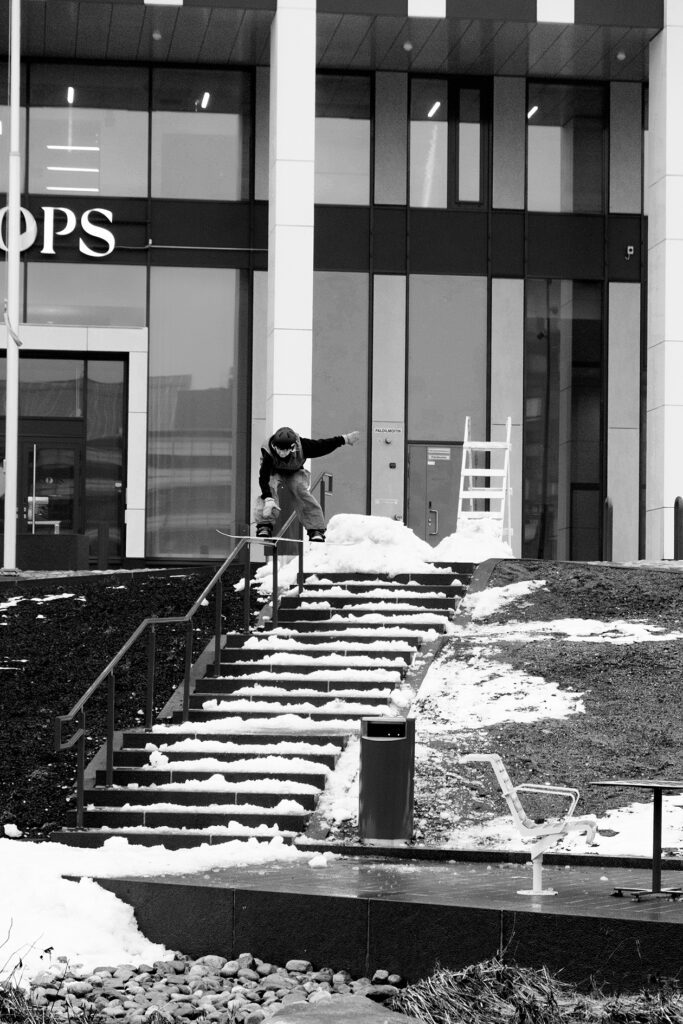
Thank you
A massive shoutout to all the ladies who let me pick their brains about the street snowboarding scene in Finland. This feature is based on their insights, experiences, and thoughts. Thank you, Henna, Sara, Merika, Telma and Sofianna – and Helsingin Lumilaitauilijat.

